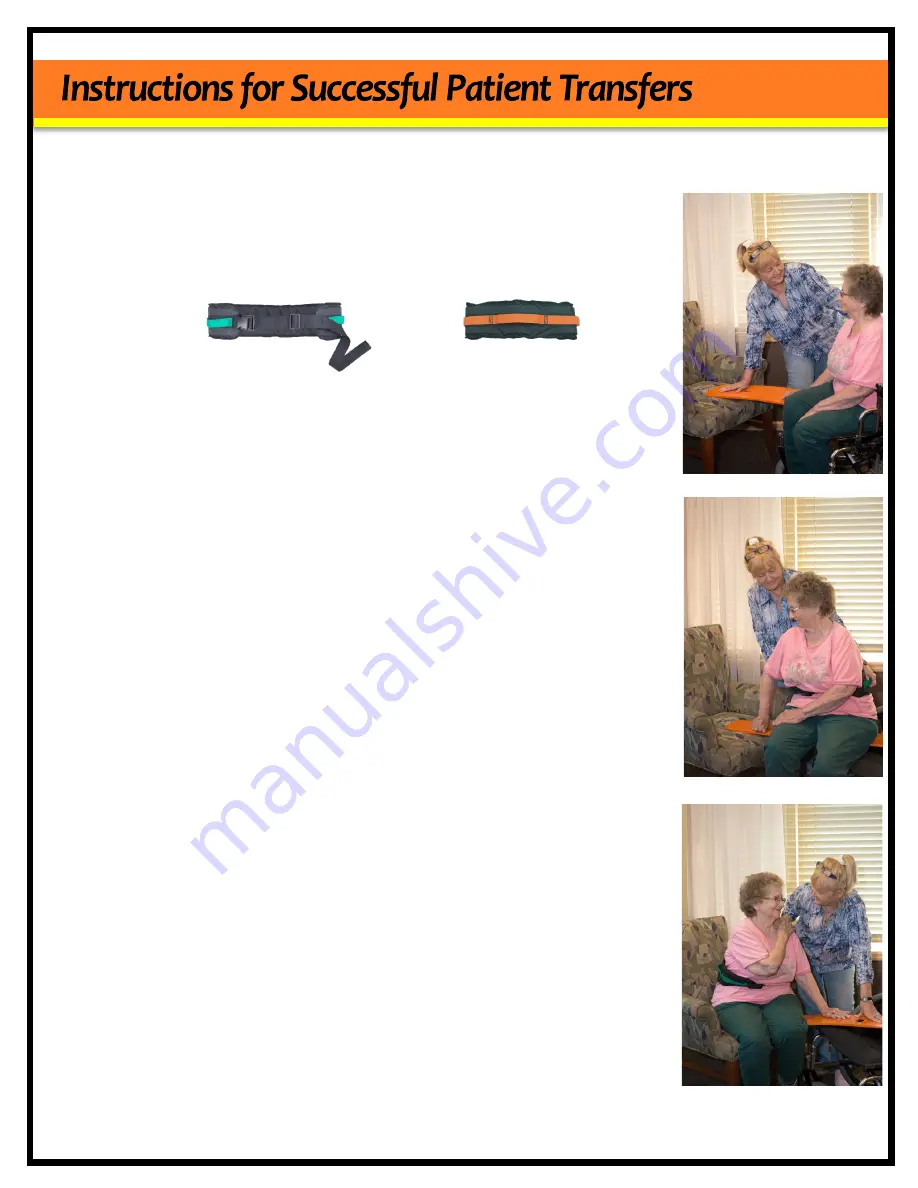
Caregiver Safety:
Using a Gait (transfer) belt with all assisted transfers is recommended. This allows patients
to have good support, and gives caregivers a grip while holding onto patients. When
assisting a patient, keep your knees bent and your back straight through the transfer
process. This position can avoid unnecessary back and leg stress. Place the gait belt around
the patient’s waist, not their chest. Beasy carries premium, padded gait (transfer) belts.
They are items #4200-Large 34-52” waist (Green) or #4200S-Small 22-36” waist (Orange).
Assistants for Transfers:
Know your limitations. We recommend clearance from a physical therapist or doctor for all
unassisted transfers. For safety, while learning how the transfer board works for you, two
assistants are recommended for the first few patient transfers. Make sure you feel secure
with your transferring technique before using one caregiver.
Make a Plan:
Set the board where you will transfer to make sure there are no obstacles in your way, and
check how level the surface is. Talking to the patient about how you will proceed with the
transfer, will allow them to help you as much as they can, and feel comfortable with the
procedure.
If using the board on a solid surface, the board may tend to slip. Use a piece of rubber
(provided) or a wash cloth in between the surfaces to keep from slipping.
Keep Your Transfer Surface Level:
There should never be more than a six inch incline or decline between surfaces in your
transfer. Use of a wheelchair cushion or towels may help level the surfaces. This is
important for your safety, and will reduce the amount of effort needed to complete the
transfer. Make sure there is a secure amount of the board on both transferring surfaces.
Soft, cushioned surfaces like a bed may compress leaving less of the board on the surface.
Protect Your Skin:
During transfers, protect your skin from being pinched or torn as it moves across the
transfer surface by always wearing clothing or use a transfer sheet. A transfer sheet is a
fabric sheet that helps ease the movement during transfers. Some individuals have used
pillow cases or towels for smooth transfers. If unusual swelling, redness, or discomfort
occurs, use should be discontinued and a healthcare professional consulted.
Posture Yourself for Transfer:
Keep your feet flat on the floor while transferring. As you move across the board, stop as
needed to reposition your legs and feet. Do this one leg at a time, while keeping each foot
aligned with the knee. To avoid injury, never put your hands or fingers under the board
while transferring.
Cleaning Your Transfer Board:
Your Beasy Transfer board is virtually maintenance free, but should be cleaned frequently
with any sanitizing cleaner. Do not use abrasive cleaners, as they will scratch your transfer
board. Rinse well for healthy skin.
Copyright 2019 BeasyTrans Systems, Inc.






















